By Malini Goyal ET Bureau|Sep 17, 2017, 06.41 AM IST


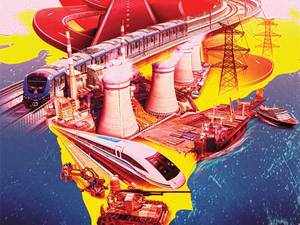
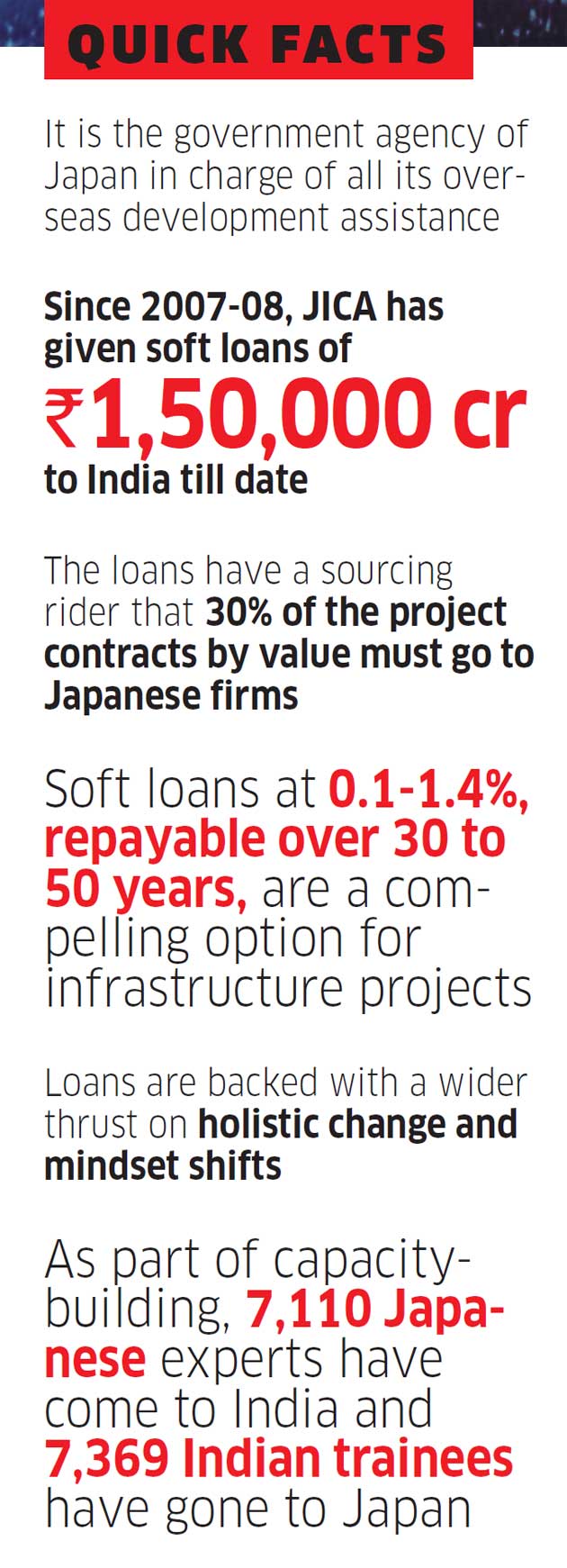


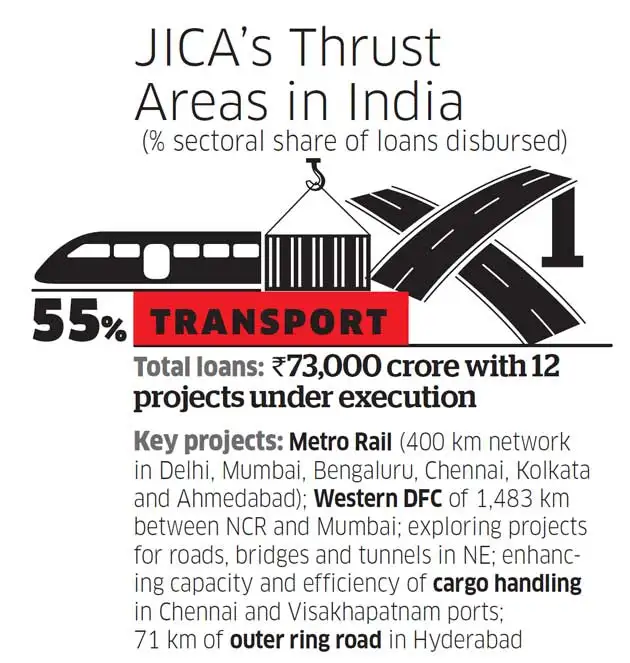
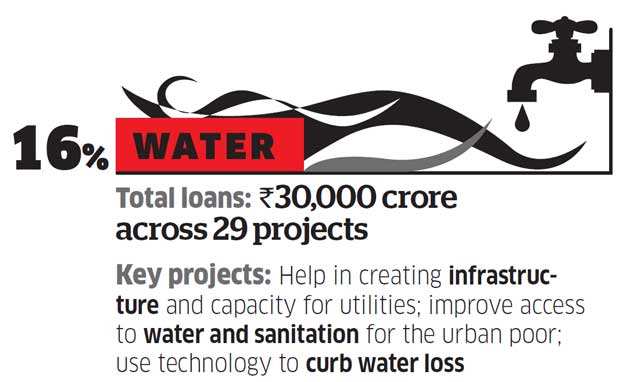
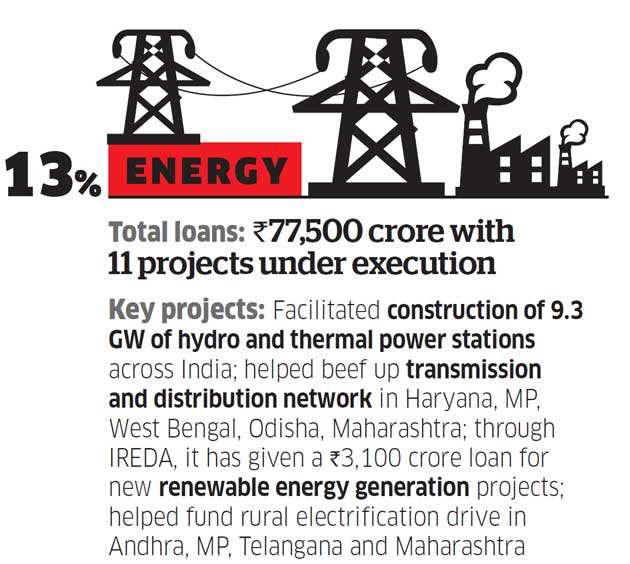

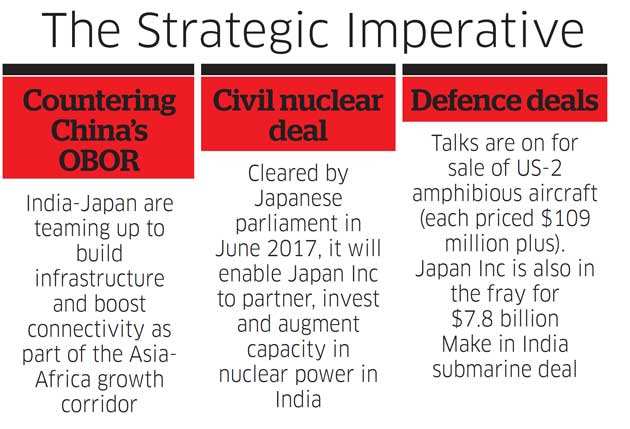





I have a hidden agenda,” says Takema Sakamoto with a naughty grin. Dressed in kurtapyjama, paired with a half-jacket, he speaks fluent English, talks generously and is comfortable in his skin talking to the media — unlike most Japanese expats.
Sakamoto is the chief representative of JICA (Japanese International Cooperation Agency), and is talking about shifting to a new upgraded office this July. “We have a lot of Japanese expats. We needed better security.” For years, JICA functioned out of a dingy office at Gopaldas Bhawan in Connaught Place in central Delhi. It now operates out of the relatively swankier HT House on Kasturba Gandhi Marg — with better security.
There is another reason — Sakamoto’s hidden agenda — for the office shift. “We are the biggest bilateral donor body in India. We needed an appropriate office. A modern office to give a thrust to our presence in India,” he says candidly.

JICA is today the largest bilateral donor agency in India, having disbursed over Rs 1.5 lakh crore of soft loans to India since 2007-08. Out of 150 countries that JICA operates in, India is its biggest donee. “India has been the largest since 2008. But we have become much closer since 2015. We are now upgrading our older relationship to a newer and a very special one,” he says.
That new chapter in the India-Japan relationship was playing out in full glory in Gujarat this week. Amid hype and hope, Gandhinagar played host to the blossoming bromance between Japan’s PM Shinzo Abe and his Indian counterpart Narendra Modi. The stage was set for some big-ticket project announcements. A Rs 1.1 lakh crore Mumbai-Ahmedabad bullet train — for which Japan will dole out Rs 88,000 crore as soft loan — has grabbed most headlines. (Ironically, feasibility studies on the bullet train were done by the UPA government.) A part of the Make in India plan, the project will create jobs, entail technology transfer and local manufacturing. “Very quietly, JICA has surpassed World Bank and ADB in seamlessly executing large infrastructure projects in India,” says Vinayak Chatterjee, chairman, Feedback Infra.

The bullet train may be the most eye-catching but JICA’s spread is deep and wide. India-Japan will cooperate to connect Africa, Southeast Asia and India’s Northeast as part of the $40 billion Asia-Africa Growth Corridor (AAGC) programme, a counter to China’s Belt and Road Initiative. Deepening security and defence ties is high on the priority list. While the deal on US-2 amphibious aircraft has not yet stitched, discussions around unmanned ground vehicles, robotics, developing smart islands (think Andaman & Nicobar), among others, made headlines. Japan pledged support for infrastructure projects in the Northeast. The two countries signed 15 agreements in a range of areas, including infrastructure, skill development, security and disaster management. A project to build a convention centre in Varanasi has been cleared.

Investment Boost
Away from the media glare, on the ground there was some serious business afoot, with both JICA and Jetro ( Japan External Trade Organisation) playing a critical role. Some 450 Japanese honchos congregated at the Gandhinagar summit earlier this week, 250 of whom had flown down from Japan. The biggest shots included Mitsubishi Heavy Industries CEO and president Shunichi Miyanaga, Hitachi executive chairman Hiroaki Nakanishi, Suzuki Motor’s Osamu Suzuki, Sadayuki Sakakibara, chairman of Keidanren or the Japan Business Federation, Mitsui board chairman Masami Iijima, and Toyota Motor vice-chairman of board Shigeru Hayakawa. “An important trend this time was a big presence of executives from medium-sized ($1-10 billion) Japanese companies,” says a senior industry executive present at the summit in Gandhinagar on condition of anonymity.

DIPP and its Japanese counterpart have signed an agreement to promote Japanese investments in India. About 15 Japanese firms have signed agreements to invest in Gujarat. This includes Suzuki Motor’s plan to expand capacity, manufacture e-vehicles and set up a lithium-ion battery factory with Denso and Toshiba. Over 10 Japanese industrial townships are to be built in four states, including Gujarat and Rajasthan. There are plans to set up four Japan-India Institutes for Manufacturing ( JIMs) to to train workers. 106 new waterways are to be jointly developed. Some serious discussions are on to work together on Iran’s Chabahar port and infrastructure projects in South Vietnam’s Mekong Delta region.

Hype or Truth
It’s not difficult to find sceptics to punch holes in the grand India-Japan spectacle. Some in the political circles call it the Bullet Election Train, as the summit precedes the upcoming Gujarat election. But there may be other more solid reasons for doubt. Consider: India’s bilateral trade with Japan is minuscule and, in fact, has been declining since the Modi government came to power in 2014. India’s exports to Japan have almost halved from $6.81 billion in 2013-14 to $3.85 billion in 2016-17. Imports from Japan, too, have fallen from a high of $12.5 billion in 2012-13 to $9.63 billion in 2016-17. As a result, bilateral trade has dipped from $18.61 billion in 2012-13 to $13.48 billion in 2016-17. This is despite the signing of the India-Japan Comprehensive Economic Partnership in 2011.

For perspective, India-Japan bilateral trade constitutes just around 1% of Japan’s total trade whereas for India it is a little over 2% of India’s total trade. This is in sharp contrast to bilateral trade ties with China, which is today India’s largest trade partner. Though skewed in China’s favour, India-China bilateral trade stood at $61.3 billion in 2016-17 with India’s export to China at $10.2 billion. Similarly, Japan’s trade ties with China are more robust. In 2016, Japan exported $113.9 (17.7% of its exports) to China and imported $156.6 billion with a trade deficit of -$42.7 billion.

Perhaps foreign direct investment (FDI) from Japan, which has been on the rise, may be a better proxy for the warm ties. From around $512 million in 2006, it today hovers around $4.7 billion. It more than doubled between 2013 and 2014 when it stood at $1.7 billion.
Japan-based Yoshihisa Tani, executive officer at Team Pasona, who till last year headed its India office, offers a ringside view. “The years 2015 and 2016 were not good. Japanese companies focused on Asean markets instead of India,” he says. Team Pasona is an HR consultancy that offers training and recruitment services to mostly Japan-headquartered MNCs. In Japan, language is a huge barrier, especially in services sectors like IT. “China has more than 2 million Japanese-speaking workers while India has just 20,000,” says a Delhi-based senior executive at an industry association. “Triggered by NTTDocomo and Ranbaxy-Daiichi (partnerships that ended bitterly), Japanese companies had turned wary about India. That is changing. Today, there is a greater willingness and confidence in India,” says Rohit Berry, partner (lead Japan corridor), KPMG India.

Sun Finally Rising?
Driven right from the top — by the two PMs — change seems to be afoot. The big focus is on capacity-building at every level — institutional, governmental and even workforce. “We are looking at real goals where we build good-quality projects that are stable, safe and sustainable,” says JICA’s Sakamoto. Bullet train — or Shinkansen as it is called in Japan — is a difficult project with very high safety and punctuality standards.
In the Northeast, 10 JICA experts are working on the ground, preparing manuals and masterplans for sustainable agriculture. While it is training state government officials to build capacity for project implementation, plans are afoot to send small batches of officials to Japan for in-class training. Working with siloed departments, JICA is fostering interdepartmental collaboration by being the bridge. Capacitybuilding and a mindset change seem to be recurrent themes. The latter revolves around developing habits such as not just building but also making people use public toilets, overall cleanliness, punctuality and safety. “We are happy to be a catalyst for change. We lend but we are not a bank. We want to see deeper change,” Sakamoto says.
Sandeep Singh, managing director of Tata Hitachi Construction Machinery, can feel it first-hand. Earlier this year, the Japanese government queried about his company’s training programmes for unemployed youth, outside of their own internal training programme for customers, vendors and the like. “We got the message that it is not enough. They insisted that Japanese firms like us train youth,” he says. This was followed up seriously until Singh committed to training 30 youth annually for in-demand skills like welding. “I was happy to see the seriousness. The Japanese government doesn’t take anything lightly. They have hired an agency to see this gets done,” he says.
Many other programmes are underway to boost bilateral economic ties. Six months ago, Japan rolled out its JITCO programme in India to help tackle manpower shortage in Japanese firms here. It is focused on ITI-trained, blue-collar workers, who will be taught hard and soft skills and will be sent to Japan for a three-year, on-the-job training programme. The first batch of 15 workers has just been placed in Japan and the plan is to send 500 workers in the first year.
Japan has tried its trinity development mode — focused on aid, investment and trade — in many Asian countries like South Korea, Thailand and Malaysia. “… though not acknowledged by Beijing, Japan played a critical role in China’s development,” says Purnendra Jain, head, department of Asian studies, University of Adelaide. “Japan’s aid policy has almost become a model for new donors and is now appreciated by others like OECD, which were critical of its aid policy in the past,” he adds.
The two governments are talking about training and sending nurses to Japan. As part of the Look East policy, this programme will be focused on the Northeast where caregivers will be trained for Japan. In the CEO’s forum in Tokyo in 2016, there was an announcement to make the movie Love in Tokyo 2. Japan National Tourism Organisation recently set up its first India office in Delhi and Japan has announced the production of Love in Tokyo 2 to be directed by Imtiaz Ali.
On the ground, it seems the tide is beginning to Japan Inc is putting money where its mouth is. “In Japan, we hear, the message to companies (from the government) is you should go to India,” says Tani of Team Pasona, whose India business is growing at over 20% annually. Says Berry of KPMG: “Japanese go slow. Step by step. But once they move they are there for the long term. They are extremely dependable and reliable partners.” Beyond automobiles, Japanese firms — especially midsized — are entering new sectors, including tractors, agrochemicals real estate, construction, defence, infrastructure.
“India has stood by us in difficult times. It is our turn now. If you have a need, we are happy to support,” says Sakamoto. It, however, may not be an entirely one-way street. If India is getting loans at rock-bottom rates, don’t forget that Bank of Japan is providing no-interest funds to banks to encourage them to lend. Also, the loan for the bullet train is conditional on India sourcing 30% of the project (by value) from Japan.Playing a role in India’s ascent also helps Tokyo assert itself in the neighbourhood at a time when China is flexing its muscle.
When two countries cooperate, more often than not, it is for mutual benefit. India-Japan cooperation may be no different, although the next-generation technology that India gets in a cost-effective manner may ensure it is a substantial gainer.

BULLET TRAIN : Inaugurated earlier this week, JICA will provide Rs 88,000 crore to the Rs 1.1 lakh crore high-speed rail corridor between Ahmedabad and Mumbai. It will cover 508 km in 127 minutes. The project construction will create 24,000 direct and indirect jobs. To be completed by 2022, it will entail technology transfer and local manufacturing of key components.

NORTHEAST : Amid the standoff with China in Doklam, Japan is helping India with its Look East policy. A Rs 4,000 crore project to build highways and bridges and Rs 900 crore for hydro projects will help boost connectivity and infrastructure in the region, much to Chinese displeasure. Other projects are in the works like smart city, a biodiversity initiative in Sikkim and forest resource management in Tripura.

DELHI METRO : JICA introduced India to a world-class metro rail through DMRC in the 1990s. It funded 60% of Phase 1 of the project. Trains and stations that are friendly to women and the disabled coupled with a thrust on cleanliness and punctuality set new standards for the railways. Today, metro networks are either operational or being constructed in nine Indian cities with the government seeing scope for them in 50 more Indian cities.

DEDICATED FREIGHT CORRIDOR : JICA is partnering in India’s largest railway project, the Rs 81,459 crore Dedicated Freight Corridor (DFC), which will lead to faster movement of goods and will be completed by 2019. While the World Bank is funding the Eastern DFC, JICA’s Rs 38,722 crore loan will fund the Western DFC.
No comments:
Post a Comment